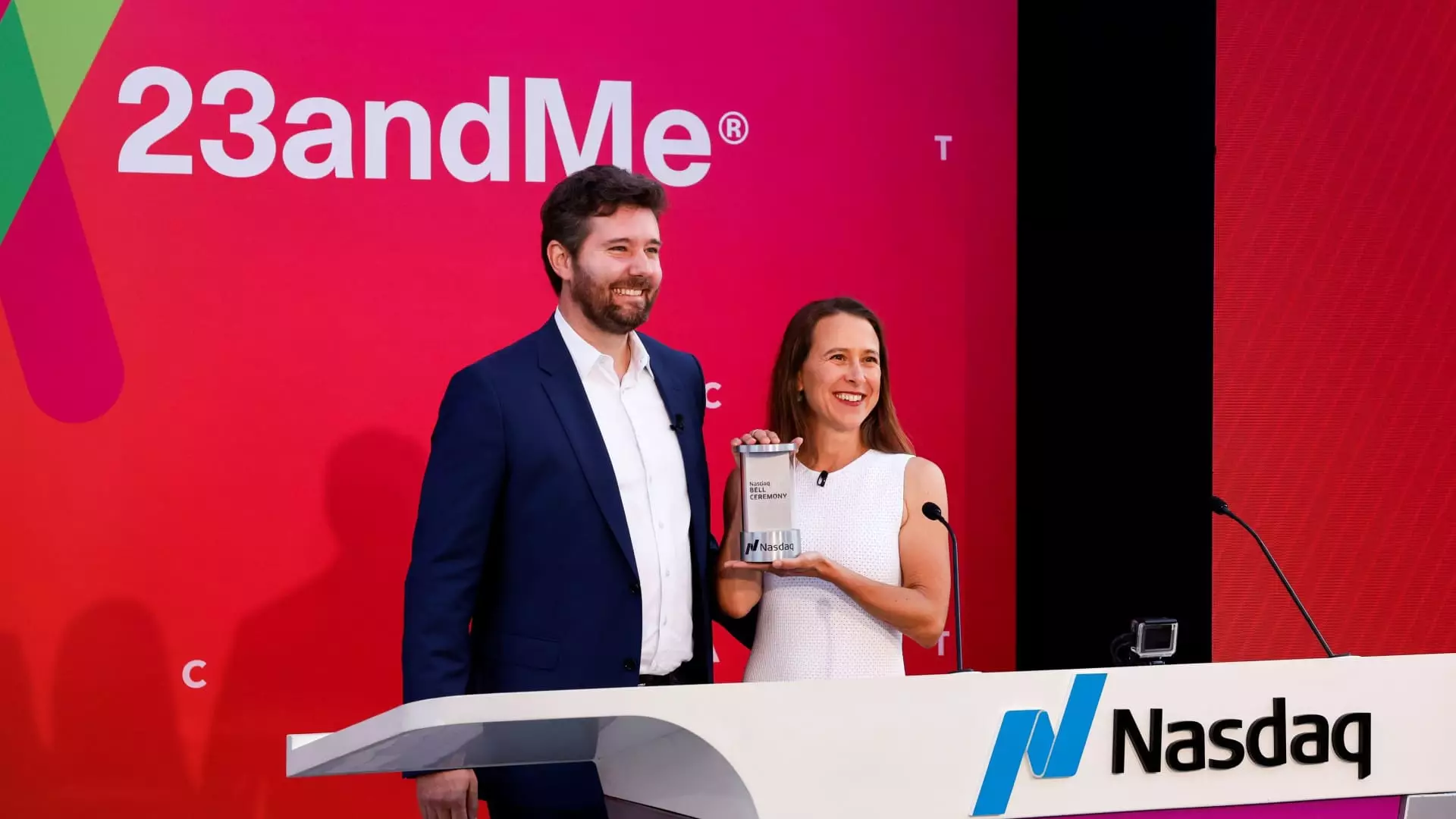Founded in 2006, 23andMe emerged as a pioneering force in the genetics industry, aiming to democratize access to genetic testing. With a revolutionary direct-to-consumer model, the company quickly captured the public’s imagination, providing consumers with affordable and accessible genetic information. Initially focusing on ancestry and genetic health reports, 23andMe was remarkably successful, bolstered by significant investment from notable figures, including celebrities who helped promote its services.
The company made waves again in 2021 when it went public through a merger with a special purpose acquisition company (SPAC). This initial public offering opened the floodgates to new opportunities and resulted in a market valuation of approximately $3.5 billion. At this point, CEO Anne Wojcicki was optimistic about the company’s future, expressing ambitious visions for both its therapeutics and consumer segments.
The Promise of Genomic Potential
Unlike its competitor Ancestry.com, which primarily focused on genealogy, 23andMe aimed to leverage its vast genetic database for drug discovery and therapeutic innovation. The promise of utilizing genetically informed research to enhance healthcare was a compelling narrative that attracted investors and consumers alike. This ambitious strategy set the company apart in a crowded market, as it sought to marry consumer genetics with pharmaceutical advancements.
However, this innovative approach required significant resources and rapid execution. The ambition to pivot into the drug discovery space was not merely about revenue, but about fundamentally altering the healthcare landscape. Despite its initial success, the challenges of maintaining momentum soon became apparent.
As 2021 progressed, the landscape began to shift dramatically. An unstable economic climate, sparked by rising interest rates, made it increasingly challenging for 23andMe to secure additional funding. At the same time, sales started to decline, calling into question the sustainability of their direct-to-consumer model. In a bid to bolster revenue, the company launched a premium subscription service in 2020. However, this strategy backfired as it failed to generate sufficient interest or recurring income.
By the 2023 fiscal year, the financial health of 23andMe was in dire straits. The company reported an eye-watering net loss of $312 million, and the collapse was reflected in its share price, which plummeted to below $1 in September. The setbacks were not merely financial; they echoed a larger narrative of failure in strategic leadership and innovation management.
Compounding 23andMe’s struggles were critical concerns surrounding user privacy. Hackers managed to breach the company’s security protocols, exposing sensitive data for approximately 7 million customers. This intrusion not only highlighted vulnerabilities in 23andMe’s cybersecurity framework but also eroded consumer trust, which is vital for a company dealing with personal health information.
As public sentiment soured, the company’s image took a significant hit. Questions surrounding Wojcicki’s commitment to privacy and her vision for the company arose, resulting in an exodus of the company’s independent board members by September 2023. Their resignation stemmed from frustration regarding differing strategic directions and a lack of confidence in her leadership.
Looking Ahead: A Troubling Future
With the clock ticking towards a November 4 deadline, 23andMe finds itself at a critical juncture. The necessity to stabilize its share price and find new board members is paramount for maintaining its listing on Nasdaq. Moreover, Wojcicki’s aim to take the company private faces scrutiny, particularly after a rejected proposal that lacked a premium offer for shareholders.
The company’s struggles serve as a stark reminder of the volatility inherent in ambitious business ventures. While 23andMe once stood as a beacon of hope in the genomics field, its path forward now seems fraught with challenges. The failure to adapt to shifting market conditions, coupled with governance and security issues, jeopardizes the very foundation upon which it was built. As the brand battles for survival, the tale of 23andMe highlights important lessons about leadership, ethical responsibility, and the necessity of maintaining consumer trust in an era where data is as valuable as gold.

